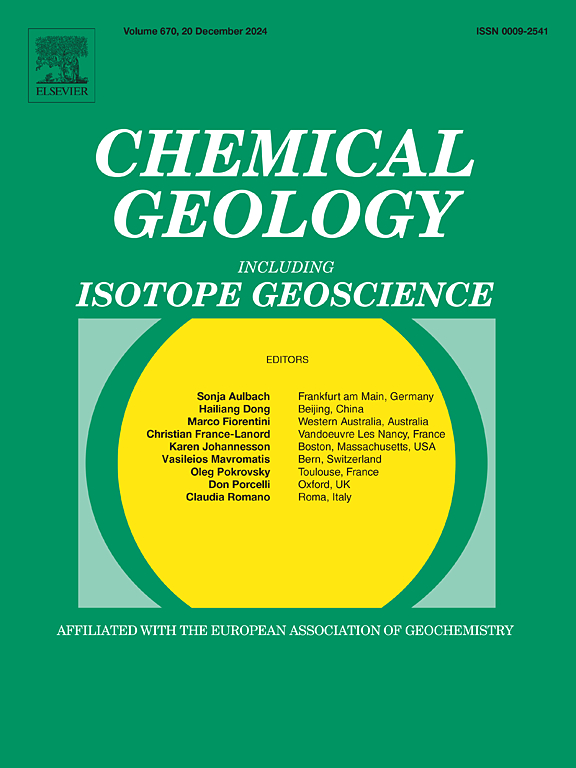The link between ophiolitic chromitites, natural hydrogen and methane: Insights from 3D microtomography
IF 3.6
2区 地球科学
Q1 GEOCHEMISTRY & GEOPHYSICS
引用次数: 0
Abstract
Ultramafic rocks in ophiolites are known as source rocks of abiotic hydrogen (H2) and methane (CH4), due to serpentinization and successive CO2 hydrogenation. Ophiolites are therefore key targets in natural hydrogen exploration. While serpentinized peridotites are the main sources of H2, chromitites host both hydrogen and large quantities of methane, as revealed by analyses of direct gas extraction from rocks and micro-Raman analyses. However, the fluid bearing properties of chromitites, as well as their mineralogical phases that are correlated to the gas genesis and evolution, are unclear. We conducted high-resolution X-ray computed micro-tomography (microCT) on chromitite samples from two ophiolites in Greece. The microCT analysis, using the X-ray attenuation coefficient (which is density-dependent), combined with 3D image analysis and pore-scale permeability simulations, revealed the geometry and distribution of pores and microfractures. This approach provided insights into their flow properties and spatial relationships with solid phases that could act as catalysts for CH₄ production (Platinum Group Elements - PGM), H₂ flow (altered PGM), and CO₂ hydrogenation (amorphous carbon). Microfractures appear as potential sites or microreactors for H₂-CO₂ conversion into CH₄, while also retaining residual, unreacted H₂. The microCT technique provides insights into the in-situ textural relationship between microfractures, gas pores and solid phases, unattainable through 2D traditional techniques, thus offering a valuable support for natural hydrogen exploration.
求助全文
约1分钟内获得全文
求助全文
来源期刊

Chemical Geology
地学-地球化学与地球物理
CiteScore
7.20
自引率
10.30%
发文量
374
审稿时长
3.6 months
期刊介绍:
Chemical Geology is an international journal that publishes original research papers on isotopic and elemental geochemistry, geochronology and cosmochemistry.
The Journal focuses on chemical processes in igneous, metamorphic, and sedimentary petrology, low- and high-temperature aqueous solutions, biogeochemistry, the environment and cosmochemistry.
Papers that are field, experimentally, or computationally based are appropriate if they are of broad international interest. The Journal generally does not publish papers that are primarily of regional or local interest, or which are primarily focused on remediation and applied geochemistry.
The Journal also welcomes innovative papers dealing with significant analytical advances that are of wide interest in the community and extend significantly beyond the scope of what would be included in the methods section of a standard research paper.
 求助内容:
求助内容: 应助结果提醒方式:
应助结果提醒方式:


